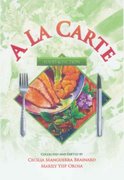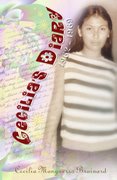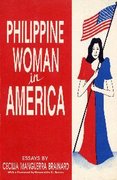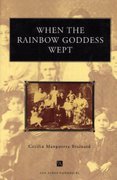From Cecilia Brainard: I am happy to report that VIBAL PUBLISHING HOUSE will publish HOW I BECAME A WRITER: ESSAYS BY FILIPINO AND FILIPINO AMERICAN WRITERS. The anthology collects 22 personal essays. The Manila launch will be on June 7, 2025. Book signings are scheduled in Cebu on May 30 and June 7, 2025 at Lost Books Bookshop.
I am proud to share Tony Perez's Essay on HOW I BECAME A WRITER. All articles and photos are copyrighted by the individual authors. All rights reserved. Cecilia Brainard has permission from the authors to use their materials here.

TONY PEREZ was born in San Fernando, Pampanga in 1951 and then moved with his family to Cubao, Quezon City at the age of five to commence and complete his education at the Ateneo de Manila University. He holds an A.B. degree in Communications; an M.A. candidacy in Clinical Psychology; and, from Maryhill School of Theology, a master’s degree in Religious Studies. He worked as Cultural Affairs Specialist at the Public Affairs Office of the Embassy of the U.S.A. for 36 years.
Mr. Perez is the author of the Cubao book series, two major trilogies in Filipino drama: Tatlong Paglalakbay (Bombita, Biyaheng Timog, and Sa North Diversion Road); and Indakan Ng Mga Puso (Oktubre, Noong Tayo’y Nagmamahalan Pa; Nobyembre, Noong Akala Ko’y Mahal Kita, and Saan Ba Tayo Ihahatid Ng Disyembre?). He established the Spirit Questors, a group of young, psychic volunteers, in 1996 and has written a series of volumes on magic and spiritism.
Mr. Perez has worked in graphite, Conte crayon, pen and ink, oil pastels, and chalk pastels, but now paints exclusively in oil. His current, major work is a 40-painting project for Maryhill School of Theology. He has held individual art exhibits at Hiraya Gallery, the Thomas Jefferson Cultural Center, mag_net gallery, National Book Store Pasong Tamo for the Thomasites Centennial in the Philippines, the Saturday Art Group, Sining Kamalig Gallery, a fiber art exhibit in the upper hallway of the Cultural Center of the Philippines, and a retrospective in the lobby of the Little Theater of the Cultural Center of the Philippines.
Mr. Perez is a recipient of the 100 Artists of the Philippine Centennial award from the Cultural Center of the Philippines in 2000, and a recipient of the Dangal ng Wika award from the Filipino Language Commission in 2022.
Although he retired in 2015 and since then no longer updates his curriculum vitae, he continues to write trilogies of full-length plays and novels.

HOW I BECAME A WRITER
When people ask me why or how I became a writer, I ask myself why and how I became anything at all. I’d always wanted to believe it was a matter of free will, choice, taste, and sophistication, but, having studied Clinical Psychology, I learned that we are molded by personifications of the superego in our childhood--parents, teachers, authority figures, older siblings, and role models among them. I recall that my grade school teachers complimented me for my writing and my drawing, and that made me feel that I had something special going for me.
I was born into a middle-class family in 1951. My father was a colonel of the Armed Forces of the Philippines who fought in Korea toward the end of WWII. My mother, like many women of that period, chose to be a housewife and raise a family devoid of the many traumas of war.
My parents and my siblings were occasional readers, but no one except myself became a writer and a painter. They would nonetheless eventually become supportive audiences of my plays and art exhibits. My mother and sisters, however, were into needlework—sewing, crochet, cross-stitching, and knitting—and I later dabbled in sewing and knitting myself; the results are on my blog at <https://tonyperezphilippinesenchantedknits.blogspot.com/>.
I seriously tried, and feel that I have not yet succeeded, to elevate knitting from the level of craft to the level of art, which entailed, among other things, developing stitches that would allow my works to NOT look like knitting, and I know that I have yet to get there.

Years later I would adopt two boys who added two daughters-in-law and five grandchildren to my family. All of them grew up surrounded by art and books on art and literature, but, like my parents and siblings, none of them became interested in writing nor in painting. My maternal aunts used to tell me that, in San Fernando, Pampanga where I was born, my heart stopped beating when I was one year old, and that I was rushed to hospital and revived. Three psychics later informed me that I was/am a walk-in soul with a purpose. I have always wondered if that was true.
After I graduated from university and long before I retired, everyone thought that I was a full-time teacher and Spirit Questor. They believed that all I did was teach and then go on Spirit Quests. They had no idea that I was part-time teaching and Questing, on Saturdays only, and that, during the week, I was actually holding, for 36 long years, a full-time job that offered lifetime annuity. Now that I am finally retired, they are surprised to know that I am what I always really wanted to be: a full-time writer and artist with a monthly pension for life.
Sadly, this is not how all writers and artists and researchers on the paranormal end up. Most of them spend their youth seeking to be writers only or artists only or paranormal researchers only. When it is time for them to retire, they suddenly realize that they have no adequate source of income and that they don’t know what hit them, because they never prepared for retirement as young writers and young artists and young paranormal researchers. They become bewildered by their own poverty. When they get sick, they beg others to help them.
I can never refer to my development as a writer without referring to my development as a painter. I realized, early on, that the two go hand in hand. To this day I observe that writers who cannot draw or paint well, really do not write well, and that painters who cannot write well, really do not paint well--they cannot even articulate their own works for their gallery exhibits. Such writers and such painters continue to extol their works as “self-expression.” forgetting that self-expression as an excuse for writing and for painting should have been left behind in their K-12 classrooms.
Through my days at university, I have always been fascinated by the fact that certain, verbal descriptions cannot be adequately illustrated, and that certain, visual images cannot be properly described in words, but that both writing and painting were the completion of series of ideas. It occurred to me that this apparent dissonance actually had its uses, and that, in a manner of speaking, one could paint a novel and write a painting. These two dimensions of writing and painting—the interface between the verbal and the visual, and the concept of writing and painting as series of ideas—became the foundation for the first workshops in creative writing I conducted.

Years later I felt that those were not enough. I investigated the dimension of emotion and its psychology. I saw, both in fiction and in drama, that it is the emotions that actually tell us the stories. I incorporated emotional truth exercises in my workshops—a fearsome challenge to the faint-hearted. One particular batch of students was simultaneously enrolled in a disaster and survival course that required them to accomplish all kinds of challenging feats, and the students claimed that it was more terrifying to go through emotional truth exercises than to jump from a tall building onto a trampoline. It was quite interesting that the writers who were emotionally dishonest with themselves produced the most mediocre works. I explored different emotions and mixed them like paint colors, going beyond primaries to secondaries and on to tertiaries. It was a joy to witness characters come to life as complex human beings because of their complex emotions.
I couldn’t stop there, and arrived at the doorstep of the fourth dimension of writing and painting, which is that we write what we dream, we dream what we write, we paint what we dream, and we dream what we paint. It seemed urgent, therefore, to be able to teach writers to remember and record dreams, interpret them, and develop them into stories and pictures.
While studying and analyzing dreams--not only my own but also the dreams of others—the concept of “dream cities” came to the surface. I taught my students to map out the most frequent locales of their dreams on drawing paper, including gray areas that remained in shadow, representing the Unconscious. They came up with houses, schools, restaurants, train stations, seaside resorts, churches, and cemeteries, even if they hadn’t actually been to those particular places in real life. I theorized that one’s “dream map” could even be set side by side with the “dream maps” of others, especially if those others were persons who were close to or connected to the dreamer in some kind of psychological, emotional, or symbiotic way. I informed my students that, in such instances, it is possible for them to visit one another’s “dream cities” as long as their “dream maps” could be set side by side. I started testing this theory by means of hypnotism and a series of regression exercises, but these were dreaded by many workshops participants, who described the exercises as being too intense. By this time I’d already been conducting workshops in the Philippines, in Australia, and in Singapore.

Hypnotism and regression led me deeper into the artist’s psyche, and I held one-to-one sessions with interested writers on past-life regression. Moving back in time to past lives involved traveling through Carl Gustav Jung’s Collective Unconscious. Interestingly, such forays allowed the participants to write and paint from the points of view of previous lifetimes and karma. The exercises allowed them to create works from the points of view of persons they’d been in the past, such as men, women, murderers, murder victims, persons of different ethnic backgrounds, and so on. All they had to do was surf through the inner Internet of Memory.
And all to what end? Not only to become a well-rounded writer and painter, but to become a well-rounded person as well, harnessing all five dimensions into their everyday lives.
To summarize, these are the five dimensions of creative work I discovered on my journey through writing and painting:
1) The interface between the verbal and the visual
2) Writing and painting as complete series of ideas
3) The psychology of emotion
4) The incorporation of dreams and dream messages in one’s work
5) The use of hypnotism and regression to revisit previous lifetimes and look at the world, once again, through different perspectives
6) Integrating all five dimensions to live life not merely as a writer and as a painter but also as an individuated human being
As to the last three dimensions, I developed two, two-week workshop syllabi before I retired in 2015: From Dreams to Drama (for TheatreWorks Singapore) and From Drawing to Drama, from Paintings to Plays.
Today, when students and workshop participants ask me for tips to successful writing, I give them only one, which is to develop their powers of observation. A person with weak powers of observation should not even attempt writing or painting, for the works produced will have, to begin with, the marked absence of originality. I have a blog for the Spirit Questors that contains exercises on strengthening powers of observation, and they can be useful to both writers and painters as well, at
I also have loose notes and exercises on writing and drawing in another blog.
Tony Perez's Writing from The Heart, at
.http://tonyperezphilippinescyberspacebook18.blogspot.com/.
https://tonyperezphilippinescyberspacebook19.blogspot.com/
READ ALSO:
Celebrating STEP INTO OUR KITCHENS AND HOW I BECAME A WRITER
Tony Perez, Goodbye for Now
How I Became a Writer Series
Ian Rosales Casocot
Caroline S. Hau
Paulino Lim, Jr
Tony Perez
Eileen R. Tabios
John Jack G. Wigley
Hope Sabanpan Yu
AND MORE from Cecilia's blog:
Writing Workshop with Author Cecilia Brainard April 19, 2025
Author Cecilia Brainard Interview by Read Pinoy Philippine National Book Development Board
Cecilia Brainard Talks About Her Novel The Newspaper Widow and More - video link
A Book Fair to Remember (And Get Ready For), by Cecilia Manguerra Brainard, Positively Filipino
Philippine Folktale - Los Siete Pecados, by Filomena Alesna Cuenco
An Afternoon with Exploding Galaxies, with Carlos Bulosan Book Club, PALH
Carlos Roxas Interview of Cecilia Brainard re Frankfurt Book Fair
Cecilia Brainard's Travel Report of Frankfurt Book Fair 2024
Tags: Filipino authors, Filipino writers, Filipino books, Filipino literature









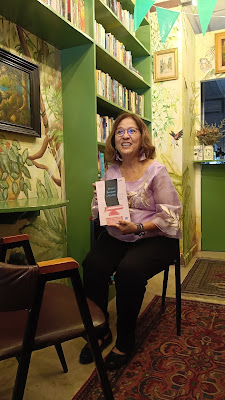























.jpg)





















